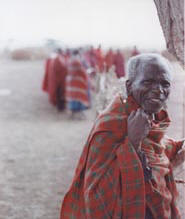|
||||||
|
Tanzania Profile
Tanzania is the biggest of the East Africa countries (i.e. Kenya, Uganda and Tanzania). Has a spectacular landscape of mainly three physiographic regions namely the Islands and the coastal plains to the east; the inland saucer-shaped plateau; and the highlands. The Great Rift Valley that runs from north east of Africa through central Tanzania is another landmark that adds to the scenic view of the country. The rift valley runs to south of Tanzania spliting at Lake Nyasa; one branch runs down beyond Lake Nyasa to Mozambique; and another branch to north-west alongside Burundi, Rwanda, Tanzania and western part of Uganda. The valley is dotted with unique lakes which includes Lakes Rukwa, Tanganyika, Nyasa, Kitangiri, Eyasi and Manyara.
|
|
||||||||||||||||||||
|
The uplands
includes the famous Kipengere, Udzungwa, Matogoro, Livingstone, and the
Fipa plateau forming the southern highlands. The Usambara, Pare, Meru,
Kilimanjaro, the Ngorongoro Crater and the Oldonyo Lengai, all form the
northern highlands. From these highlands and the central saucer plateau
flow the drainage system to the
Indian ocean,
Atlantic
ocean,
Mediterranean sea
and the inland drainage system.
Climate:
Capital City With a population of almost 300,000 (1998) Dodoma which is located at a distance of 309 km west of Dar es Salaam, is the country's political capital. Dar es Salaam is the country's commercial capital. Other big urban centres include Arusha; Moshi, Tanga and Mwanza to the north of the country, Morogoro in the east; Mbeya and Iringa, to the west. Tabora and Shinyanga are also important economic hubs in central Tanzania. Mwanza and Dar es Salaam are two cities in Tanzania so far.
Administration:
Population:
- about 51% are women; and - about 46% are under age 15.
Natural.Resources:
Wildlife and Tourism - 12 National Parks, the Ngorongoro conservation Area, 13 Game reserves, 38 Game Controlled Areas: National Cultural Heritage Sites (about 120 sites) Fisheries - three large lakes: Victoria, Tanganyika and Nyasa, the Indian Ocean coastline, rivers and wetlands. Potential yield of fish from natural waters is estimated to be 730,000 metric tons annually, present catch is 350,000 metric tons. Forestry and Beekeeping Non-reserved forest-land (1,903.8 km2), forest/woodlands with national parks etc (200 km2), and Gazetted forest reserves (1,251.7 km2).
Currency:
Official currency
is the Tanzania shilling or 100cents which approximate US$ 0.004. |
|||||||||||||||||||||

